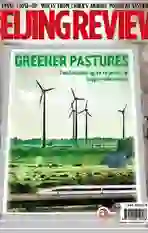Quality Essential for New-Energy Vehicle Sales
2017-04-10
Policy support is highly necessary for the initial development of new-energy vehicles (NEVs), but if the industry is unable to harness powerful growth engines itself as soon as possible, it is uncertain whether the industry is worthwhile of support. To maintain sustainable and sound development, the NEV industry must go from being policy-led to being market-driven, which requires NEVs to be affordable, easy to use and safe.
The fast growth of Chinas NEV market in recent years from a small initial base number is mainly because the central and local governments have provided subsidies and supporting policies—most notably limiting the purchase of gasoline vehicles in some cities. At present 70 percent of NEV sales are reportedly made in the cities limiting purchase of gasoline cars. But according to the latest policies, central government NEV subsidies will drop by 20 percent in 2017-18 from the 2016 level before they are canceled by 2020, and subsidies from local governments must not exceed 50 percent of central govern- ment subsidies. As a result, the subsidies this year will decrease by 40 percent compared to 2016. Such a sharp decline has discouraged many potential NEV buyers.
According to figures from the China Association of Automobile Manufacturers, in January China produced 6,889 NEVs and sold 5,682, a decline of 69.1 percent and 74.4 percent, respectively. Some automakers didnt even sell any NEVs. It is believed that after a transition period of several months, the sales volume of NEVs in China is likely to reach 800,000 units. However many people are still concerned about the policy-driven feature of the industry.
To achieve sustainable and sound development, the NEV industry must upgrade its products. First, NEVs must be more economical. Cost-performance ratio is a very important reference for car buyers. For NEVs, the ratio between endurance mileage and the cost of charging is such a reference. But all major China-made electric car models are less cost-effi cient than gas-powered vehicles if government subsi- dies are deducted. Up till now no domestic automaker has developed a star model that can compete with gasoline vehicles in terms of costperformance ratio. Without revolutionary breakthroughs in technology, there would be no such NEV model. Therefore automakers must pay more efforts to research and development.
Second, NEVs must be easy to use. Besides high prices, an important factor which discourages the purchase of NEVs is the inconvenience of charging. At the end of 2016, 1 million NEVs were reportedly running in China, but the number of charging piles was only one seventh of the volume. Building charging facilities in residential communities is still slow, and the existing charging piles are not well managed or fully used. It is even more unacceptable that in some cities NEV owners have to pay for both electricity and parking for using charging piles. The long charging time also makes NEVs less competitive than petrol cars.
Third, NEVs must also be safe. More than 100 years of motor history has proved that as peoples living standards improve, motor vehicles will inevitably be preferred. However, there are shocking car accidents. In the initial development period, NEVs, besides common safety problem s in gasoline vehicles, have some additional safety issues. There is no absolute safety in the world, but it is the bounden duty of automakers to ensure the safety of their products. Only when NEV makers base the safety of their products on technological progress and strict management and try to make their products safer can the industry realize sound development.
